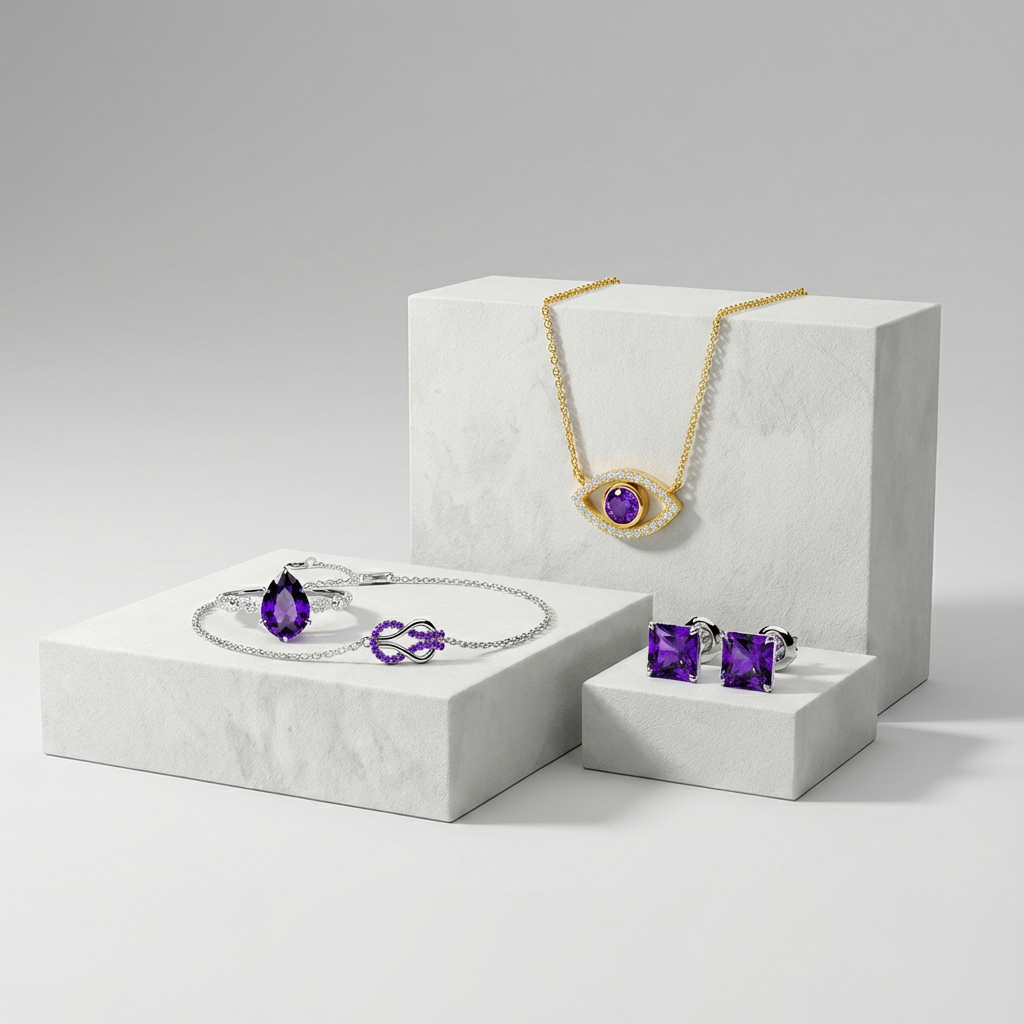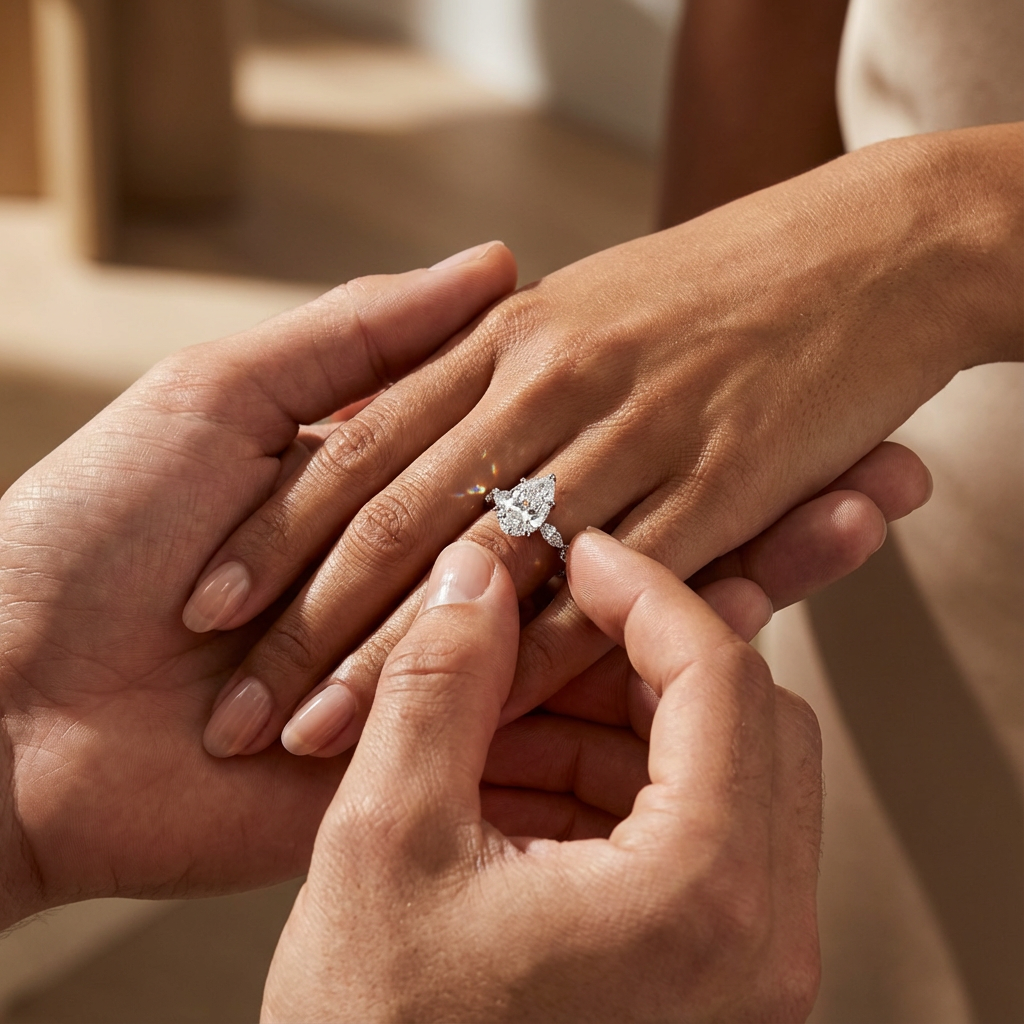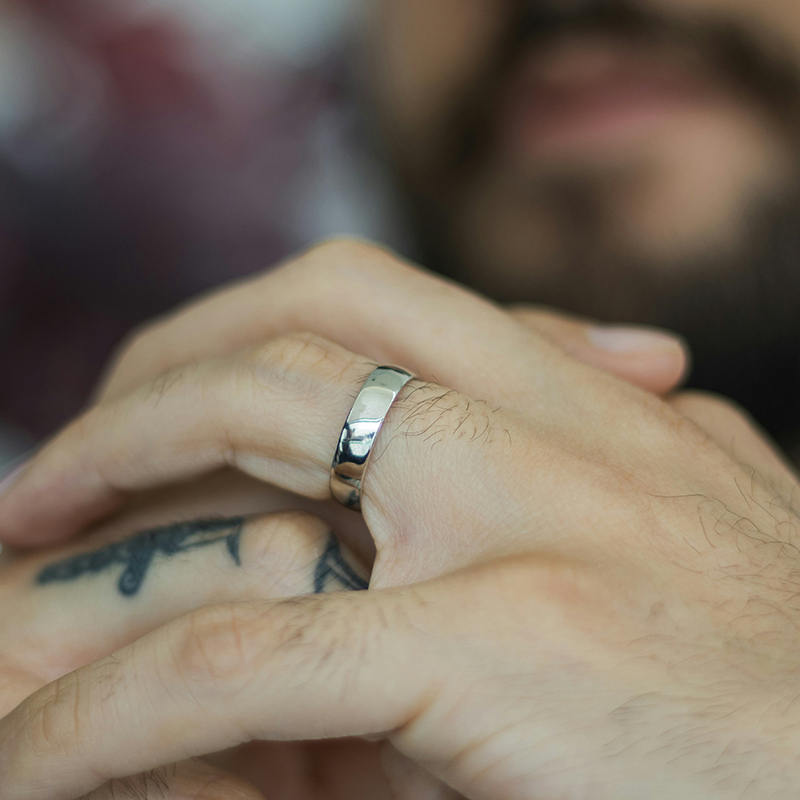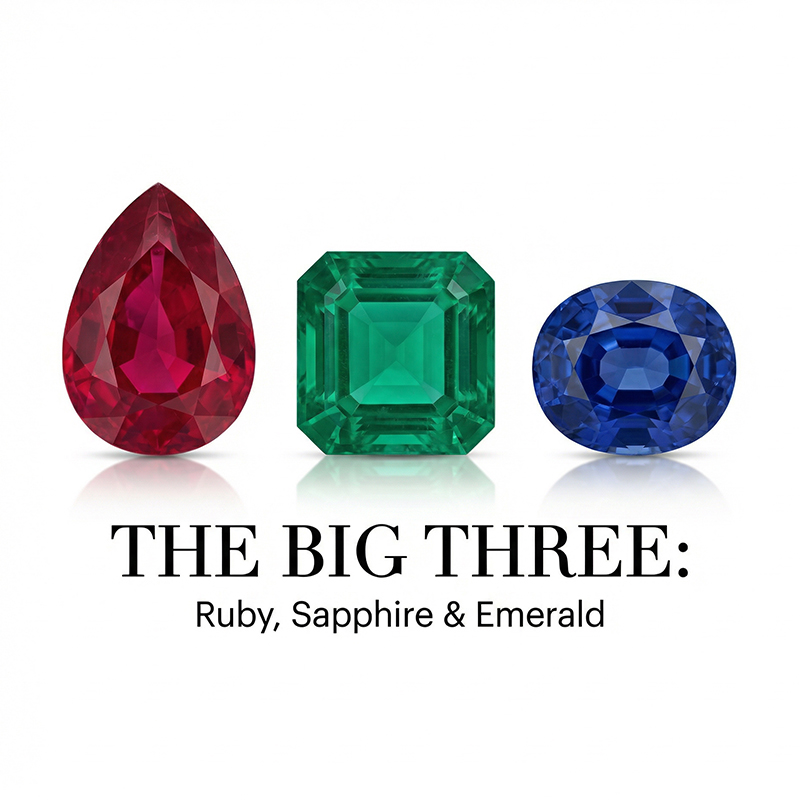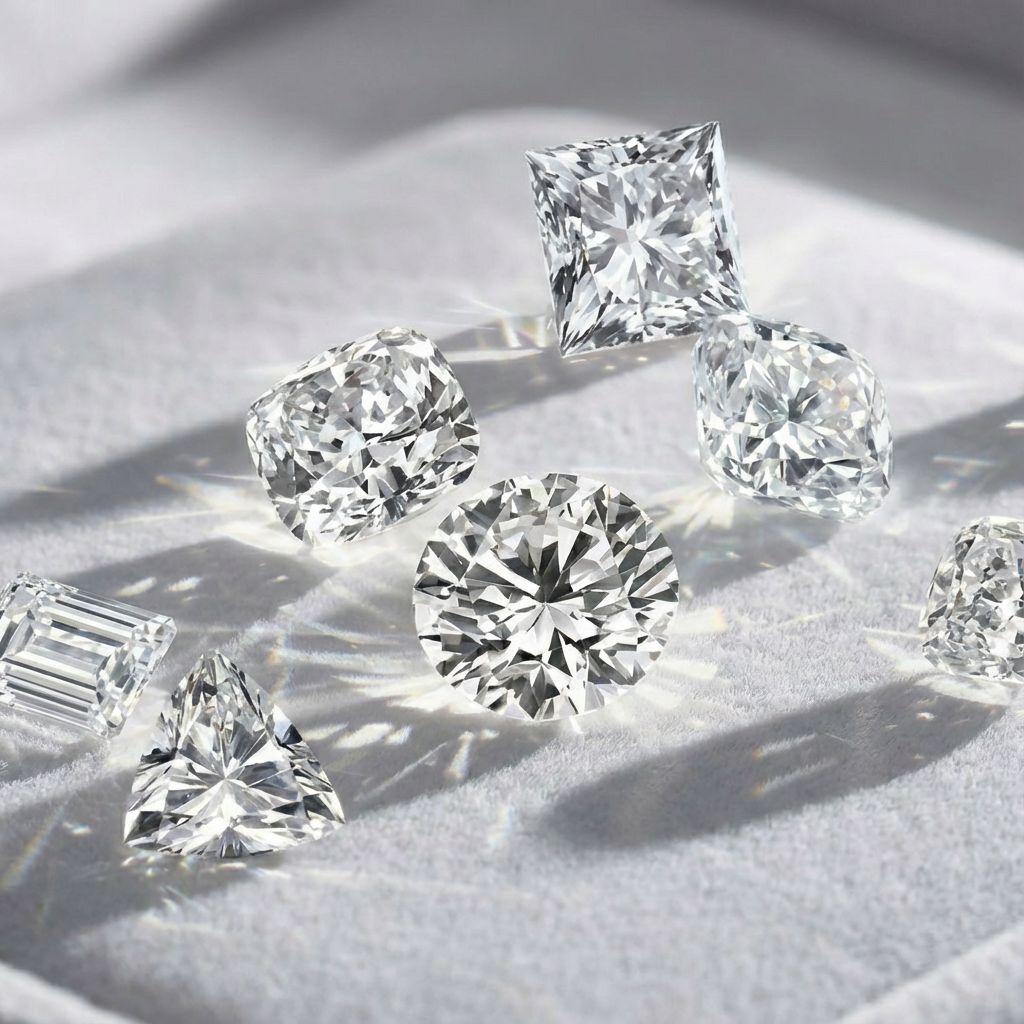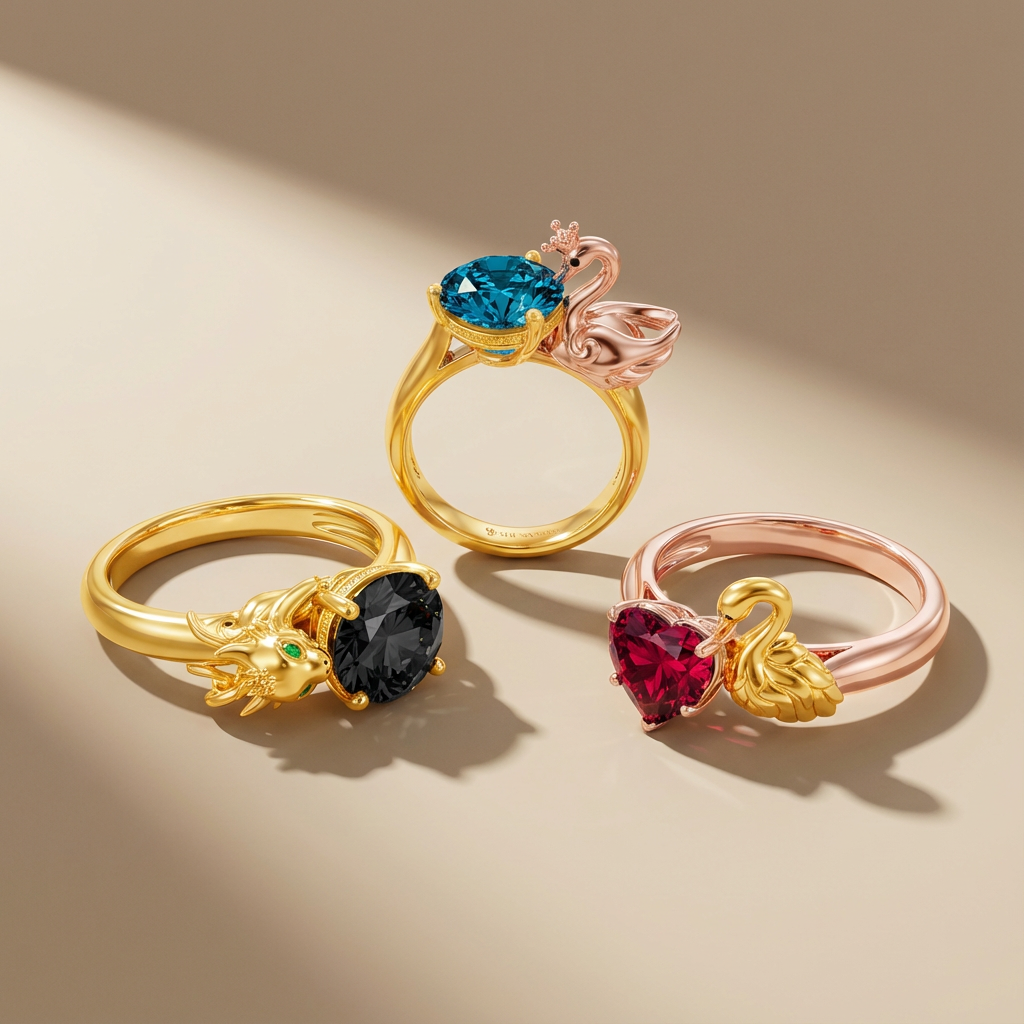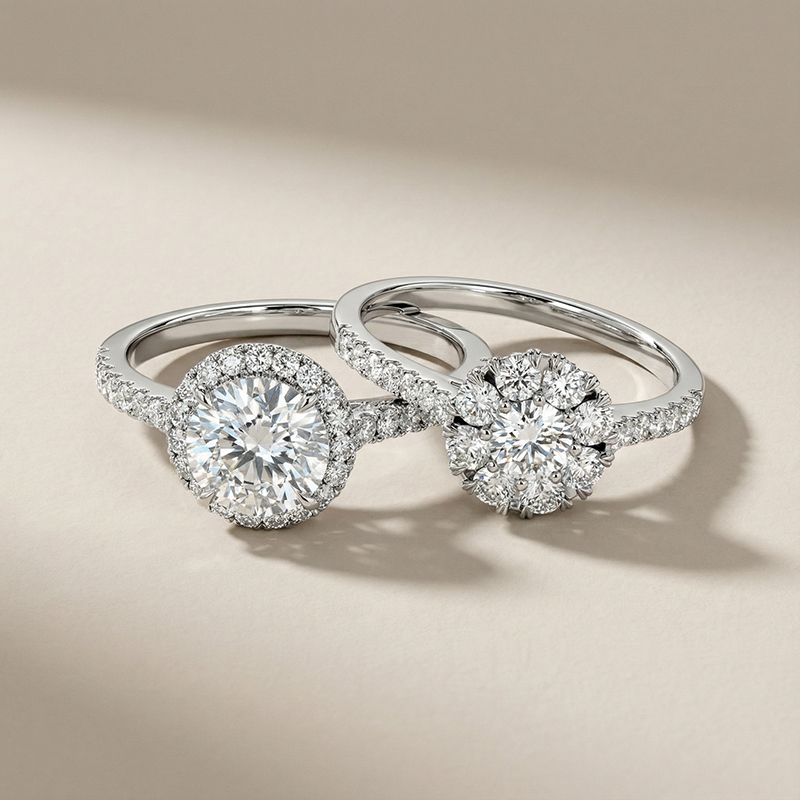Platinum vs. White Gold is one of the first questions you face when choosing an engagement ring or wedding band. At a glance, both metals look strikingly similar—bright, elegant, and timeless. But when you look closer, the differences in price, durability, maintenance, and long-term value become clear. Understanding these details helps you decide which metal truly fits your lifestyle and the meaning you want your ring to carry.
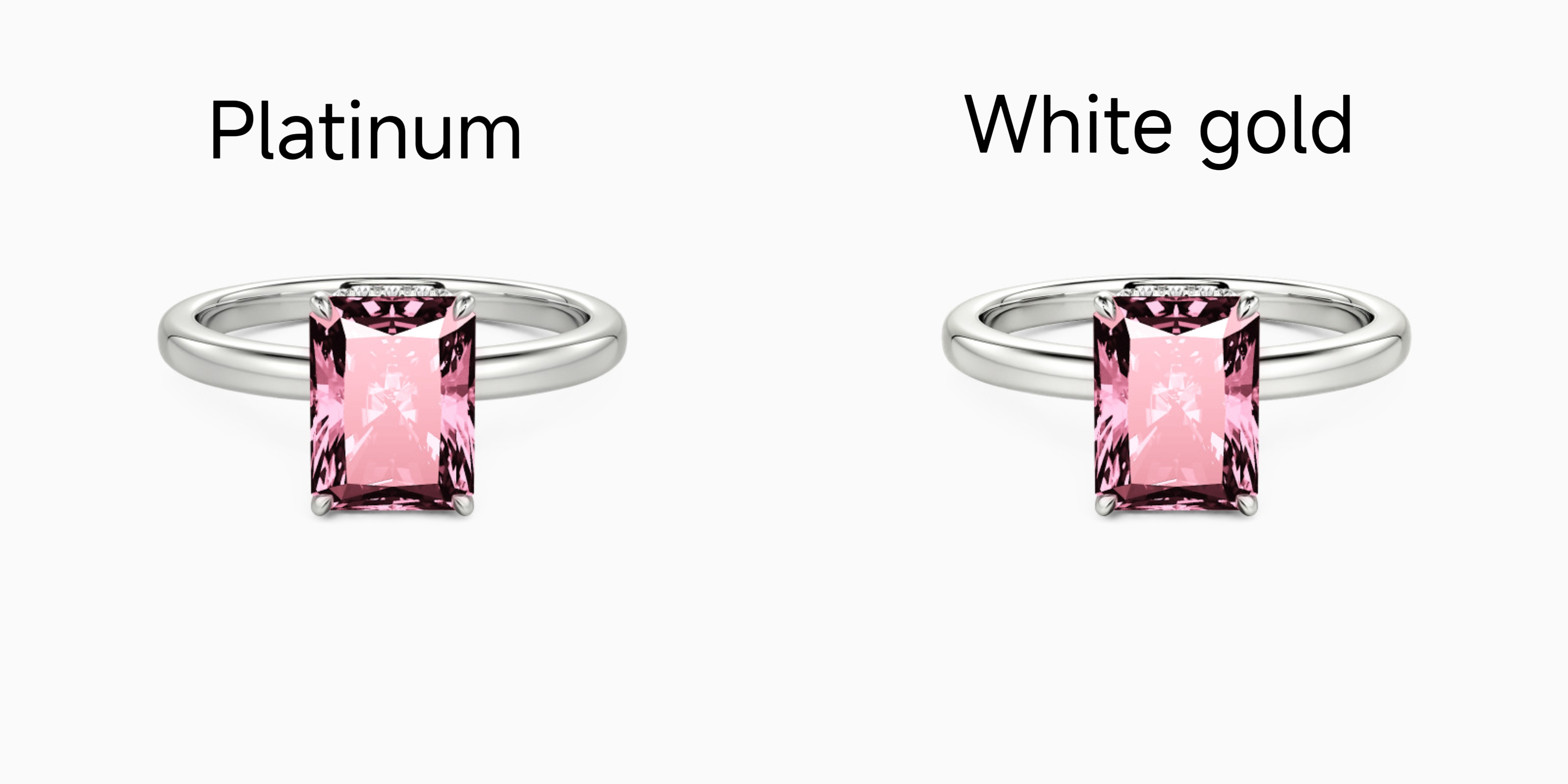
What Is Platinum?
Platinum is a naturally white metal. It is typically used in jewelry at 95% purity, It doesn’t rely on any plating, so its color stays true for life. This is one reason the Gemological Institute of America (GIA) describes it as both pure and enduring—perfect for jewelry you want to pass down.
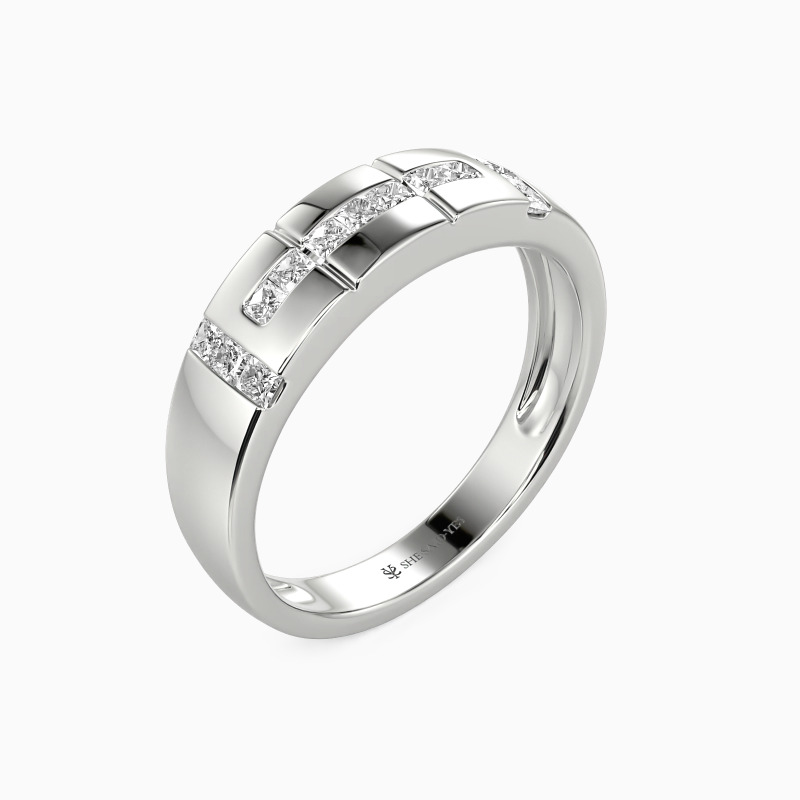
What Is White Gold?
White gold is not naturally white. It begins as yellow gold, which is alloyed with metals like nickel, palladium, or silver to lighten its color. To achieve its bright, reflective appearance, it is coated with rhodium—a member of the platinum family—that gives it its signature shine.
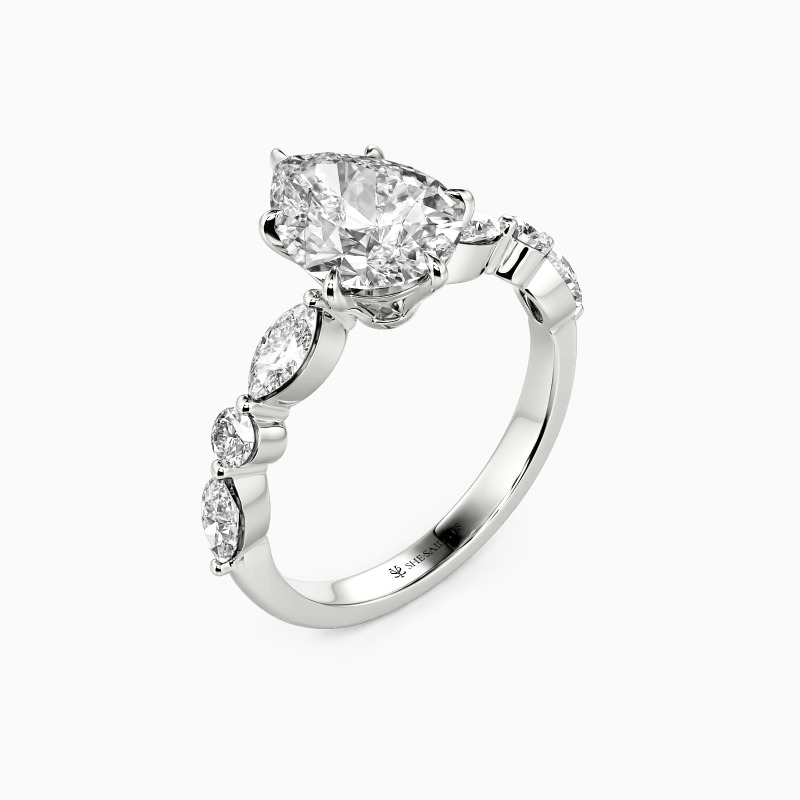
Platinum vs White Gold: Key Considerations
1. Price & Rarity
First, let’s address cost, because it is often the starting point for many buyers. Platinum is naturally more expensive. According to the Gemological Institute of America (GIA), platinum is about 30%–50% higher in price compared to white gold. The main reasons are rarity and density. Platinum is much rarer in the earth’s crust than gold, and a ring made of platinum weighs more because of its density.
You may be asking: Is platinum worth the extra money? The answer depends on your priorities. If your budget is tight, white gold gives you a very similar look at a lower price. Many couples appreciate that white gold allows them to spend more on the center diamond or on design details. On the contrary, if you value exclusivity and want a metal that feels more substantial, platinum justifies the higher cost.
2. Durability & Daily Wear
Then, you should consider how the ring performs in everyday life. Platinum is softer on the surface but tougher overall. When it scratches, the metal is not lost but simply shifts. Therefore, your ring keeps the same weight and volume even after years of wear. Over time, platinum develops what jewelers call a patina, a soft matte texture that some people love for its antique character.
White gold, by comparison, is harder at the surface because of its alloys. It resists small scratches slightly better, but the rhodium plating that makes it shine wears off with time. You will eventually need to have it re-plated every 12–24 months if you want to keep the bright white finish. As a result, white gold often comes with more long-term maintenance.
3. Allergies & Comfort
If your skin is sensitive, platinum is one of the safest choices you can make. Its purity makes it hypoallergenic. You’ll also notice it feels heavier on the hand—a quality many people love because it makes the ring feel more substantial.
White gold can sometimes contain nickel, If this worries you, you can request nickel-free alloys, though they tend to cost a bit more. On the flip side, white gold feels lighter, which some people find more comfortable for everyday wear.
4. Maintenance
If you’re not a fan of jewelry upkeep, platinum will make your life easier. A polish here and there is usually all it needs.
White gold requires a little more attention. Most jewelers recommend replating every 12–24 months, which is quick and not too costly, but still something you’ll want to plan for.
5. Symbolism & Prestige
When you choose platinum, you’re choosing a metal tied to history and prestige. Luxury maisons have long favored it for their most iconic designs. For many, platinum represents permanence and legacy—the kind of ring you imagine passing down through generations.
White gold tells a slightly different story. It became popular in the 20th century as a fresh, stylish alternative to platinum. For younger buyers, it represents practicality and modern taste: you get the same bright look without stretching your budget.
6.Resale Value
Because platinum jewelry is so pure, it usually holds its value more steadily than white gold. White gold’s value depends on whether it’s 14K or 18K, but the rhodium plating itself doesn’t add to the long-term worth.
That said, most people I’ve worked with don’t choose a ring with resale in mind. They choose it because it feels right—because it represents something personal.
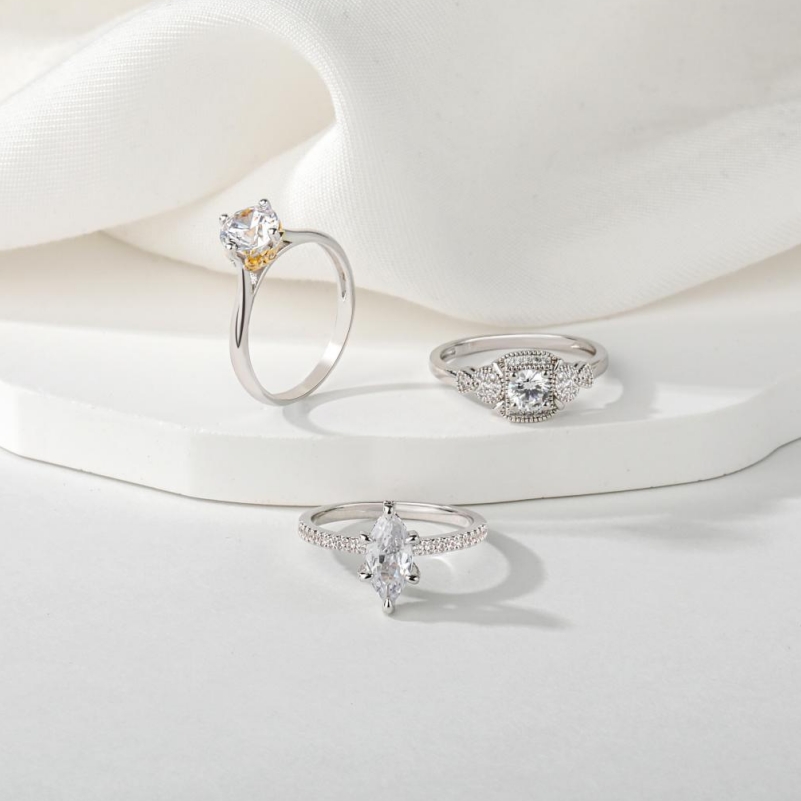
Expert Insights
Harry Winston famously said, “A diamond needs a worthy stage.” Platinum, with its density and natural whiteness, is often seen as that stage, especially for larger stones. GIA also notes that platinum’s strength makes it excellent for securing diamonds.
That said, white gold has its own advantages. Many designers prefer it for more intricate, lightweight settings, and its affordability gives you more room to play with stone size or design details.
Quick Takeaways: Platinum vs White Gold
| Feature | Platinum | White Gold |
|---|---|---|
| Price | 30%–50% higher, due to rarity | More affordable, budget-friendly |
| Durability | Very dense, develops patina, holds weight | Hard surface but plating wears off |
| Appearance | Natural white, elegant matte over time | Bright, mirror-like, needs replating |
| Maintenance | Low – occasional polish | Needs rhodium replating every 1–2 years |
| Allergy Risk | Hypoallergenic | May cause nickel allergy |
| Symbolism | Prestige, exclusivity, heirloom value | Modern, practical, accessible |
| Resale Value | Stable, 95% pure | Varies by 14K/18K, plating adds no value |
Final Thoughts
So, platinum vs white gold, which metal should you choose?
- Pick platinum if you want a ring that’s naturally white, hypoallergenic, and enduring enough to become a family heirloom.
- Pick white gold if you prefer a more affordable option with a bright, fashionable look and don’t mind occasional maintenance.
In the end, both metals create stunning settings. The best choice is the one that reflects your style, your values, and the story you want your jewelry to tell.

